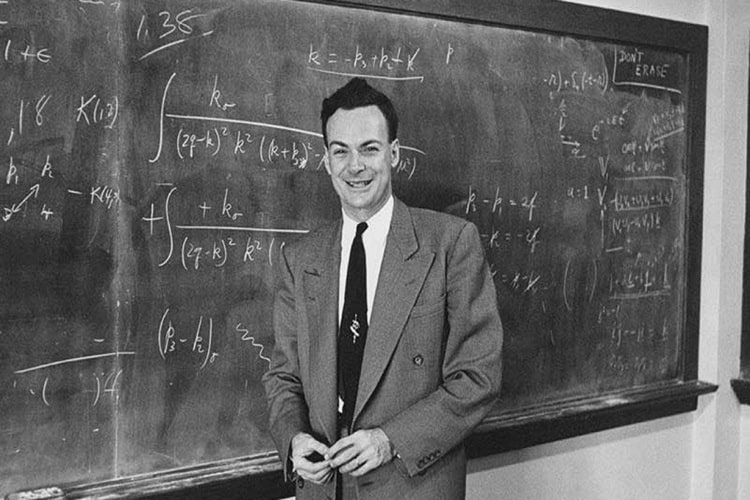Unmasking a Legend: The Story of Richard Feynman

Richard Feynman (11 May 1918 – 15 February 1988) was an American theoretical physicist. He was awarded the Nobel Prize in Physics.
Life and Career
Richard Feynman was born on 11 May 1918, in New York, New York, United States. Feynman attended the Massachusetts Institute of Technology (MIT) for his undergraduate studies. He graduated in 1939 with a bachelor’s degree in electrical engineering.
During World War II, Feynman worked on the Manhattan Project, a research project that developed the atomic bomb. After the war, he pursued his Ph.D. at Princeton University under the guidance of John Archibald Wheeler, completing his thesis titled “The Principle of Least Action in Quantum Mechanics” in 1942. After completing his doctorate, Feynman held academic positions at various institutions, including Cornell University and the California Institute of Technology (Caltech). His work on quantum electrodynamics (QED) during this time earned him a Nobel Prize in Physics in 1965, which he shared with Julian Schwinger and Tomonaga Shinichiro.
Feynman developed a visual representation of particle interactions known as Feynman diagrams, which played a crucial role in simplifying complex calculations in quantum physics. Feynman was an exceptional teacher and communicator. His famous undergraduate lectures at Caltech were later compiled into the three-volume set “The Feynman Lectures on Physics,” which remains a popular resource for students and enthusiasts. Feynman was also known for his role in investigating the Space Shuttle Challenger disaster in 1986. His efforts to communicate the technical details of the disaster to the public were instrumental in revealing the issues that led to the tragic event.
He died on 15 February 1988, in Los Angeles, California, United States.
Award and Legacy
Richard Feynman was awarded the Nobel Prize in Physics in 1965, which he shared with Julian Schwinger and Tomonaga Shinichiro. The prize was specifically for their fundamental work in quantum electrodynamics, with Feynman’s contributions being the development of quantum electrodynamics using his diagrams.
Feynman received the Albert Einstein Award for his outstanding contributions to the field of physics. Feynman’s most enduring contribution to theoretical physics is the development of Feynman diagrams. These graphical representations of particle interactions revolutionized the field by providing a visual and intuitive way to calculate complex quantum mechanical processes.
Feynman’s lectures at Caltech were compiled into a three-volume set titled “The Feynman Lectures on Physics.” These lectures, known for their clarity and engaging style, have become a classic resource for physics students and enthusiasts.
Feynman’s autobiographical book, “Surely You’re Joking, Mr. Feynman! Adventures of a Curious Character,” offers a glimpse into his life, humor, and approach to problem-solving. The book became a bestseller and contributed to his popular image as a brilliant and unconventional thinker.
Feynman’s role in investigating the Space Shuttle Challenger disaster and his efforts to communicate complex technical issues to the public showcased his commitment to scientific integrity and transparency.
Observer Voice is the one stop site for National, International news, Sports, Editor’s Choice, Art/culture contents, Quotes and much more. We also cover historical contents. Historical contents includes World History, Indian History, and what happened today. The website also covers Entertainment across the India and World.

